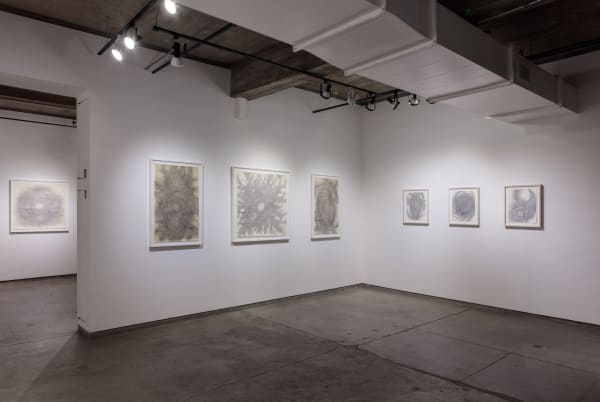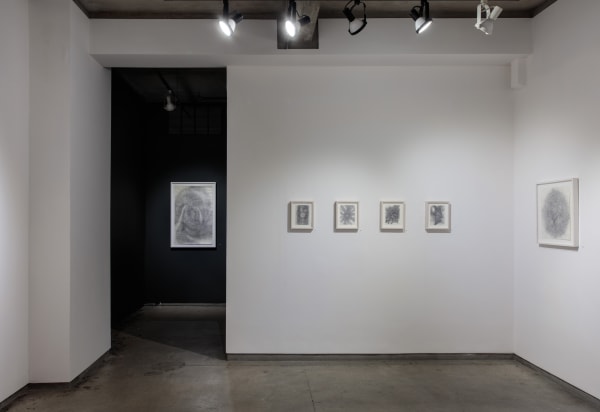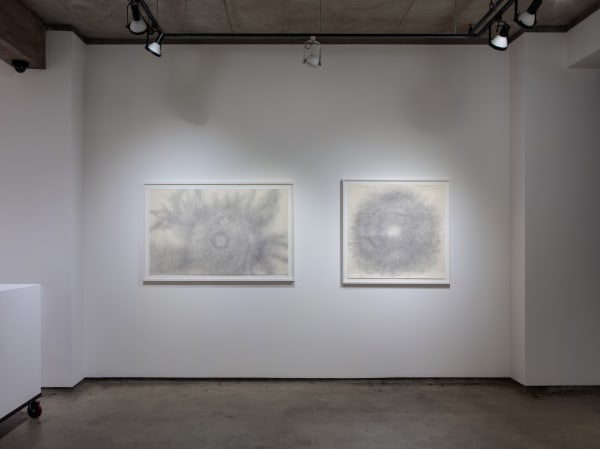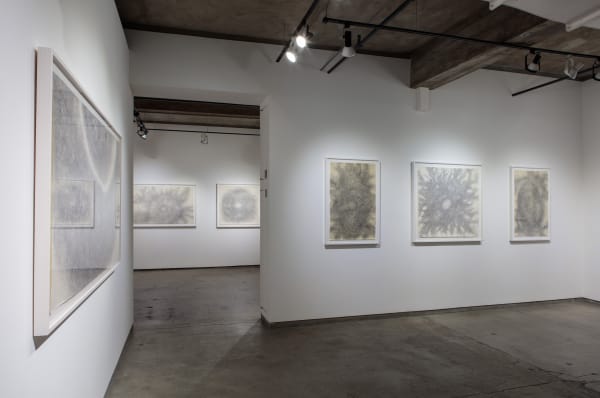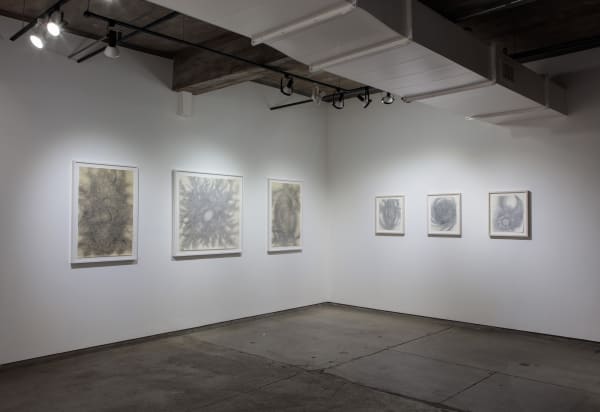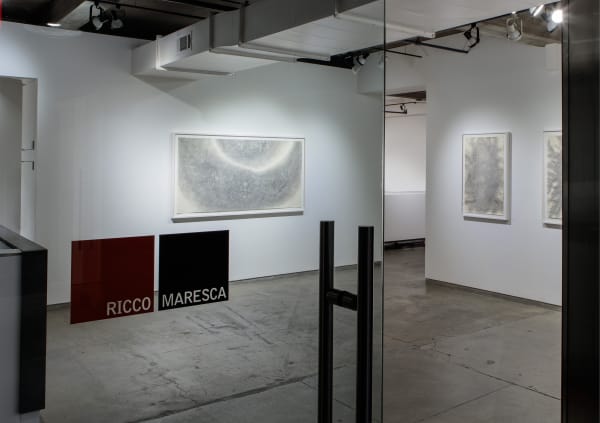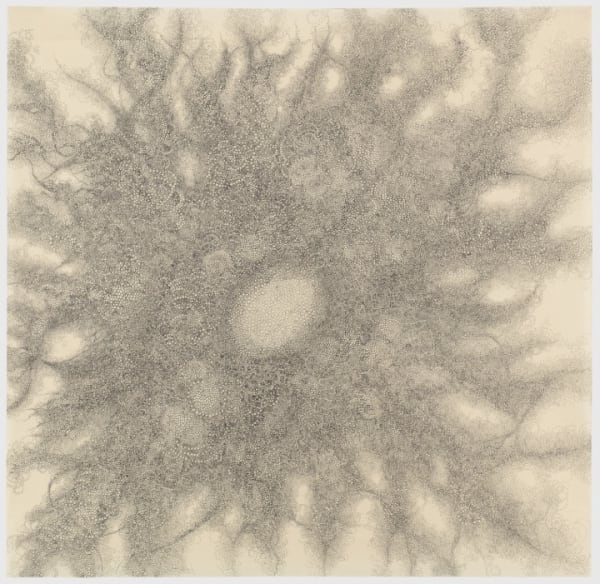Hiroyuki Doi, Soul
Hiroyuki Doi’s drawings are compulsive in their execution, baroque in their inkiness, and still ultimately austere. Brought into existence through a hypnotic reiteration of the primordial circular form, these brimming “sphere-scapes” emerge in all their interactive resourcefulness only as we are willing to immerse ourselves in them. Picture Doi as the classic artist demiurge, pointing a finger somewhere at his arcane geographies and indicating: “you are here.” What we see and feel as we travel through them might, conversely, prove to reflect our own mental space. Although this is possibly intrinsic to all non-figurative art, Doi’s practice—which he describes as each piece evolving spontaneously until it finds its form—is very much akin to improvisational music; taking off from a few basic riffs to be created as it happens.
Born in 1946 in Nagoya, Japan, Doi, a former chef, started making art in the 1980s after the death of his younger brother from a brain tumor. While there is, in fact, something wistful and contemplative in the artist’s opus, it also seems to embody—from a purely formal standpoint—a kind of intricate visual catharsis that is much more compelling as far as art goes. Inventing lucid alternate realities from isolation—driven by overwhelming visions or spiritual voids—seems a common denominator in the otherwise diversified field of Self-Taught art. What may have originated as a kind of therapeutic requiem for Doi, has hence generated a mysterious, self-renewing act of abstract mapping that can be re-contextualized in multiple ways.
In such sense, we could think of the artist’s works as interconnected, fluid sequences in a single composition that can take the shape of spiral or elliptical galaxies, cosmic dust formations, undulating cyclones, and storms. Landmasses adrift, coral reefs, pools of microscopic chimeras, drops of oil, strings of pearls, and honeycombs. Bubbles gurgling, waves steaming, mountain forests, nested fairy rings, engulfing fire bolts, and explosions. Cumulus or shelf clouds, ethereal cornucopias, festering wounds, and voluptuous vortices.
Similes are perhaps only illusory anchors within the relentless motion conveyed by Doi’s scrupulous proliferation of circles. The artist produces monochrome three-dimensional effects through rhythmic patterns of conglomeration and dissemination; weaving concentric and aleatory sections of effervescent orbs with others so small, partial, and condensed that they blend into obscurity. Consequently, as we follow these nuanced progressions, we soar and sink while the whole arrangement builds organically upon itself. For Doi, this process begins and ends with a Pilot .005 DR archival drawing pen—the ink of which seeps precisely into the bark fibers of handmade sheets of unglazed Japanese “washi” paper from the 360 plus-year OZU WASHI STORE in Tokyo.
However obsessive, these drawings always seem to “breathe” in their pictorial space; either from the encapsulated lacunae within or from a sparsely speckled perimeter. Their impressionistic texture (as well as the fact that all Doi’s pictures—even those depicting a nucleus—are unconstrained by perspective), create the sensation that we are looking at something irradiating a perceptible energy field, or momentarily crossing the sheet of paper and about to leave it shortly.
This notion of flux is the heart of Doi’s output; his works seem not so much vessels for a given substance as embodiments of an ongoing quest for equilibrium. The artist thus captures the tension between chance and intentionality; the amorphous and the distinct; transience and eternity. In this context, marking paper with ink becomes a philosophical action, where the gesture of the circle comprises the Zen “ensō” (implying completeness and non-conceptual clarity), the cross-cultural symbol for the cycle of time, the slight gateways between the visible and the invisible, and Doi’s metaphysical, unrelenting, fixation on the osmosis between the minuscule fragment and the whole; from unicellular life to the universe.
– Alejandra Russi
PRESS
HYPERALLERGIC by Edward M. Gómez

